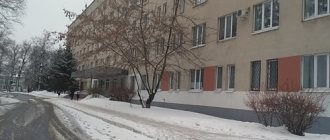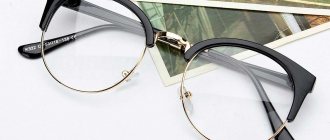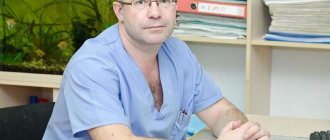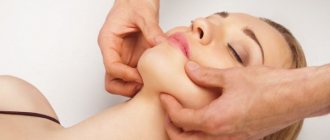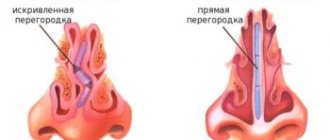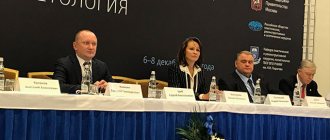Alexey Igorevich Rubin is a plastic surgeon at the Institute of Plastic Surgery and Cosmetology. He has twenty-five years of experience in leading aesthetic medicine centers in the USA, Germany, and Great Britain. Alexey Igorevich masterfully performs the following operations:
- Rhinoplasty, as well as reconstruction of the nose after unsuccessful surgical interventions;
- Classical and endoscopic face and neck lifting;
- Blepharoplasty;
- Installation of facial implants;
- Endoscopic interventions on the chest and abdomen;
- Mammoplasty with and without the use of implants;
- Classical and laser liposuction;
- Lipo restoration of tissues and contours of the body, face;
- Correction of the figure (Body lifting) and ears;
- Minimally invasive Shilouette Lift face lift.
A.I. Rubin worked in the following aesthetic medicine centers:
- Department of Endoscopic, Plastic and Reconstructive Surgery of the Lancet Clinic in Moscow;
- Head of the Department of Plastic and Reconstructive Surgery in London (UK);
- Head of the Department of Reconstructive and Plastic Surgery in Berlin (Germany);
- Department of Plastic and Reconstructive Surgery, Bedford Surgical Center, Beverly Hills, California (USA) under the direction of Nicholas Nikolov;
- Department of Dermatology Dr. Zein Obagi MD, Beverly Hills, California;
- Department of Plastic and Reconstructive Surgery Dr. Steven Hoefflin and Department of Reconstructive and Plastic Surgery at the University of California at Los Angeles (USA);
- Head of the Department of Reconstructive and Plastic Surgery at the Berlin Havel Klinik. (Germany).
He is a member of the International Society of Plastic Surgeons, the Society of Plastic Surgeons of the USA, Germany, the International Confederation of Plastic Surgeons, and the German Chamber of Physicians. Alexey Igorevich is a full member of the International Rhinoplastic Society, an employee of the Department of Plastic Surgery of the Russian State Medical University.
Plastic surgeon Alexey Rubin
Youth is a disadvantage that quickly passes. These words of Goethe have become classics, but today only a few will agree with the famous poet. Youth and appropriate appearance are more important today than ever and are an advantage. To maintain beauty and health, a blooming appearance and radiant skin, modern people are ready for drastic decisions. Plastic surgery, a scalpel, anesthesia - this used to be scary, but today it is an elementary way to combat aging. One method to eliminate signs of aging is endoscopic facelift. Why does the operation have such a name, who would be a suitable candidate and what age-related changes does it combat? Alexey Igorevich Rubin, a capital plastic surgeon with almost 30 years of experience, gave comprehensive answers. An employee of the Moscow Institute of Plastic Surgery and Cosmetology spoke about gentle facial rejuvenation.
Corr.: Hello, Alexey Igorevich. The current variety of rejuvenation methods allows the patient to choose the one he likes. How often do you perform minimally invasive surgeries to correct age-related facial changes?
Alexey Rubin: Good afternoon. Patients today really prefer something that is gentle and does not require long rehabilitation. There are enough low-traumatic rejuvenation methods - endoscopy, thread technologies, short-scar lifts. The number of such corrections has increased, as has the number of people seeking help from a plastic surgeon.
Another question is that in a particular situation, minimally invasive operations are not always enough and a classic lift, which involves extensive and deep intervention, may be required. If the patient is over 50 years old and has pronounced wrinkles, skin ptosis, and an unclear oval face, then only SMAS lifting will help. True, now people are thinking about rejuvenation much earlier - 30-40-year-olds come who want to do a minimal facelift. Thus, with the help of minimal intervention, they are able to obtain a long-lasting result, thanks to which they can completely eliminate the need for a more global operation.
Corr.: Endoscopic face lifting is considered low-traumatic and is credited with many advantages over classical methods. Fair?
With the help of an endoscopic lift, you can get rid of drooping eyebrows and outer corners of the eyes, deep eyebrow folds, nasolacrimal grooves, wrinkles on the forehead
Alexey Rubin: Absolutely. Endoscopic equipment is an optical-mechanical device that has a light transmission and image transmission system. It is inserted into the internal tissues, and a mini-camera located on it transmits an image of the surgical field to the monitor screen. The incisions are very small, no more than 2-3 cm, so there are practically no postoperative traces left, especially since they are hidden in the scalp, in the oral cavity... This type of facelift does not involve working with deep structures, so the intervention is minimal and rehabilitation much shorter when compared with the same SMAS lift or circular. The risk of possible complications is also much lower.
Corr.: We figured out the advantages of the technique. What specific appearance problems can she cope with?
Alexey Rubin: With the help of an endoscopic lift, you can get rid of drooping eyebrows and outer corners of the eyes, deep eyebrow folds, nasolacrimal grooves, and wrinkles on the forehead. You can correct a drooping tip of the nose, pronounced nasolabial folds, wrinkles in the area around the mouth, and slight ptosis of the cheek tissues. If we consider these age-related changes as a whole, we can understand that the endoscopic technique is used to rejuvenate the upper and middle third of the face. But these should be initial or moderate manifestations of ptosis and skin aging. The technique will not cope with more serious problems.
Corr.: How is an upper face lift performed using an endoscope? Where are the incisions located?
Alexey Rubin : Facelift is performed under anesthesia, and small incisions are made in the scalp. Through these mini-accesses, an endoscope is inserted, transmitting the image, as well as instruments, with the help of which soft tissue is exfoliated from the bone. The surgeon then redistributes them and secures them in a new position using endotin. I note that a layer with a minimum number of blood vessels is peeled off, which practically reduces the risk of bleeding to zero. Another advantage of the technique is the fact that it does not injure nerve endings and hair follicles.
Endoscopic forehead and eyebrow lift sometimes even replaces blepharoplasty. It happens that people complain about drooping eyelids, but I see that eyelid correction is useless and a forehead lift is enough, due to which the eyelids also lift, making the eyes open again.
Corr. : What if the patient needs to correct the middle third of the face? Is the surgical technique the same?
Alexey Rubin: Almost, but here we make incisions in the temporal region and in the oral cavity under the upper lip. Then, with the help of devices, the soft tissues are peeled off from the periosteum, tightened and fixed in a more youthful position. This type of surgery smooths out wrinkles in the nasolabial triangle and lifts the corners of the mouth.
There is also an endoscopic temporal lift. It is rarely performed as an independent operation, but it is also effective. Its main purpose is to eliminate “crow’s feet” in the eye area, the need to raise the cheekbones and the same outer corners of the eyebrows. The incision is similarly made in the temporal region along the hairline, after which the remaining manipulations are carried out.
I would like to emphasize that the endoscopic technique does not imply excision of excess skin, only its distribution.
Corr.: That is, if I see that I have a double chin and such impressive “jowls,” then endoscopy is no longer my option?
Alexey Rubin: Relatively speaking, yes. When even deep anatomical structures such as the muscular aponeurotic layer are affected by ptosis, or if there is a significant excess of stretched and sagging skin, then you are unlikely to talk about minimally invasive operations during a consultation with a plastic surgeon. They can be done, but they will not bring the expected result; in other words, this approach is impractical. Endoscopy is more intended for younger patients - on average, 30 to 45 years old.
Endoscopic forehead and eyebrow lift sometimes even replaces blepharoplasty
Corr.: From 30? Isn't it too early?
Alexey Rubin: Yes, it may seem so at first glance. It’s just that sometimes the overhang of the skin over the upper eyelids, the earlier formation of wrinkles on the forehead may be associated not so much with the aging process, but due to a hereditary predisposition. It turns out that already at 30 years old the patient feels older than her chronological age and experiences some complexes about this. In this case, many resort to endoscopic lifting of the forehead and eyebrows, due to which facial features become generally more welcoming. Sometimes this type of facelift is used not as a rejuvenating operation, but as a beauty surgery that improves the patient’s appearance.
Corr.: You know, they always talk about short rehabilitation, that it is easily tolerated. Is this really true?
Alexey Rubin : The recovery period actually takes less time and is physically easier for patients to tolerate. But to say that rehabilitation is not required at all would be wrong, because tissue exfoliation occurs, and this requires healing. On average, patients need two weeks to recover—during this time, swelling and bruising go away. At first, a compression bandage must be worn, physical activity is excluded, and a number of other restrictions apply. Be that as it may, 14 days is enough to be able to go public. This is an average period, since due to individual characteristics, regeneration processes in the body can either go faster or take a little longer. You can finally evaluate your new appearance 4-5 weeks after surgery.
Corr.: Alexey Igorevich, thank you for finding the time for our conversation!
Alexey Rubin
Alexey Rubin
born in 1987 in Leningrad. He studied at the M. I. Glinka Choir School, then at the St. Petersburg Conservatory, from which he graduated with two specialties - “choral conducting” (2010, class of Professor Valentin Nesterov, 2010) and “opera-symphony conducting” (2015, class of Professor Yuri Simonov). He took part in master classes by Yuri Simonov, Riccardo Muti, Vasily Sinaisky, Yuri Temirkanov, Viktor Yampolsky, Bruno Weil. Laureate of the III All-Russian Open Competition for Young Conductors of Symphony Orchestras named after I. A. Musin in Kostroma (2013) and the II All-Russian Music Competition in Moscow (2015). He conducted the operas “The Marriage of Figaro” by Mozart, “Eugene Onegin” and “Iolanta” by Tchaikovsky at the Opera and Ballet Theater of the St. Petersburg Conservatory.
Since 2020 - assistant conductor of the Academic Symphony Orchestra of the Moscow Philharmonic, with whom he regularly performs at the Tchaikovsky Concert Hall and the S. V. Rachmaninov Concert Hall (Philharmonic-2). Collaborates with the Youth Symphony Orchestra of St. Petersburg, the Rostov Academic Symphony Orchestra, the Symphony Orchestra of the Surgut Philharmonic, the National Symphony Orchestra of the Republic of Bashkortostan, the Krasnoyarsk Academic Symphony Orchestra. He conducted the performances “Iolanta” and “The Marriage of Figaro” at the Saratov Academic Opera and Ballet Theater (2016). Since 2020, he has been collaborating with the Russian National Youth Symphony Orchestra.
Performs with famous Russian soloists - Boris Berezovsky, Denis Matsuev, Sergei Tarasov, Andrei Gugnin, Vyacheslav Gryaznov, Ailen Pritchin, Sergei Antonov, Alexander Ramm, Sofia Kiprskaya. Assisted Valery Gergiev, Vladimir Spivakov and Mikhail Yurovsky. Since 2020, she has been taking part in the Youth Arts Festival “Green Noise” in Surgut (the president of the festival is Ekaterina Mechetina). He has performed with young musicians – laureates of the international Grand Piano Competition and the international television competition “The Nutcracker”. Together with Ekaterina Mechetina and Dmitry Antipov (ballet dancer, choreographer, artistic director of the choreographic workshop Rudi Dance Lab) he staged one-act ballets to the music of Ravel and Rachmaninoff.
In 2020, Alexey Rubin performed for the first time with the Ulyanovsk State Academic Symphony Orchestra “Governor” and conducted the Russian National Youth Symphony Orchestra at the Denis Matsuev Festival in Perm. In the 2019/20 season he will debut with the State Symphony Orchestra “New Russia”, the Yaroslavl Academic Governor’s Symphony Orchestra, the Far Eastern Academic Symphony Orchestra, the Ural Youth Symphony Orchestra and the Iasi Philharmonic Orchestra (Romania).
The best plastic surgeons
Plastic surgeon
Performs operations:
Blepharoplasty, Bodycontouring, Mammology, Fat grafting, Mastopexy, Otoplasty, Reconstructive surgery, Breast reconstruction, Rhinoplasty, Breast augmentation, Breast reduction, Facial surgery
Researcher, innovator, scientist, author and licensed plastic surgeon, Alexey Rubin is internationally recognized as a leading expert in 3D skin and body shape restoration. He is considered one of the most renowned skin restoration experts in the world.
Dr. Rubin pioneered the concept of preserving and improving skin health in combination with surgical treatments and aesthetic restoration. He is known as a leading specialist in the treatment and reconstruction of problematic patients, working with the most difficult and severe cases around the world.
After completing his surgical residency in 1989, Dr. Rubin began his plastic surgery residency in Germany in 1991. And upon completion of the full training program in 1995, he was personally invited by Dr. Steven Hoefflin to continue his training in the Department of Plastic and Reconstructive Surgery at the University of California in Los Angeles, USA. Dr. Rubin graduated with honors from his research program in 2001.
In 2001, Alexey Rubin joined the dermatology clinic of Dr. Zein Obagi in Beverly Hills, where he developed a series of programs to protect and maintain skin health that have revolutionized skin restorative treatment and become an authoritative source of knowledge on skin health.
After nearly 20 years of active research, study in plastic and reconstructive surgery, being certified by surgical societies and performing many thousands of complex and delicate operations, Dr. Rubin opened his own international practice in 2003. Today, his clinic has offices in several countries around the world.
Dr. Rubin lectures and teaches to thousands of plastic surgeons and dermatologists in scientific forums around the world. It also provides medical services and conducts training programs for doctors at various medical centers in three countries. The result of this hard work is the international recognition of the principles he developed to restore skin health while simultaneously restoring its aesthetic condition, which today are considered the gold standard in the field of both non-surgical and surgical methods of skin care and treatment.
Dr. Rubin's proprietary treatment methods are patented, complex therapeutic programs for outpatient and home use, which he developed independently. One of Dr.'s most popular treatments is based on the concept of controlled variable-depth exfoliation using Marvel and Obagi®, performed alone or in combination with laser treatment, and provides an effective non-surgical alternative to plastic surgery.
Operations and procedures performed:
FACE: Classical and Endoscopic face and forehead lift, Neck lift, Median face lift, SurgiWire facial wrinkle trimming, Lipotransfer NOSE: Rhinoplasty and Septoplasty, Reconstructive rhinoplasty after injuries and unsuccessful surgeries EYES: Blepharoplasty, Brow lift, Lipotransfer EARS: Otoplasty LIPS : Upper lip lift, Lifting the corners of the lips, VY plastic surgery of the lower lip, Lipotransfer BODY: Liposculpture of the face and body, Liposuction BREAST: Endoscopic breast reconstruction, Breast augmentation and reduction, Mastopexy, Implant replacement High Definition liposculpture “Vaser”, Classical and Endoscopic Abdominoplasty Non-surgical treatments: Neurotoxins, Fillers SKIN: Correction, stimulation and treatment of skin aging
User reviews
- Liana, 25 years old: “I did 3 cleanses, but I saw improvements in the condition of my skin after the first procedure. There was no discomfort during the peeling, the redness disappeared the very next day, and I calmly went to work. The peeling didn’t cause any inconvenience either – it only lasted a few days and wasn’t noticeable.”
- Marina, 28 years old: “I have thin skin, so I’m wary of scrubbing and peeling. But my friend advised me to contact a cosmetologist and cleanse with rubies to eliminate facial wrinkles. After much thought, I made my decision and have never regretted it - the wrinkles are gone, there are practically no side effects, and now my skin looks great.”
- Alina, 26 years old: “As a child, I fell from a swing, and there was a scar on my forehead, which I was always embarrassed about. After two peels with ruby powder, the defect disappeared, which I am incredibly happy about.”
Ruby peeling is an innovative method of skin care that stands out among other types of cleansing for its effectiveness, painlessness and speed.
Rating
